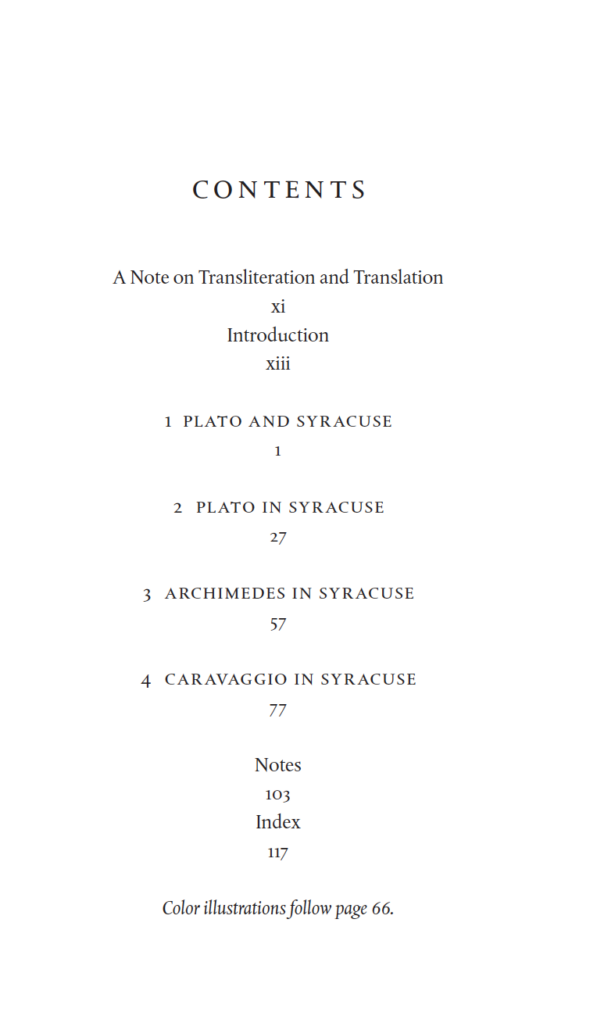In this delightful book Ingrid Rowland tells a story which weaves history, biography and a sense of place around three figures from the past: Plato, Archimedes and Caravaggio. For the non-specialist reader like myself, this unusual combination makes for a page-turning read. Rowland’s intelligent light touch can speak to a general readership, while never ignoring the complexities of historical evidence, personal testimony, hearsay, or legend. The Divine Spark of Syracuse offers a packed and thrilling journey into the various pasts of this great city. By the end it has become one of the main protagonists.
Ingrid D. Rowland
Ingrid Rowland, professor at the University of Notre Dame, writes and lectures on Classical Antiquity, the Renaissance, and the Age of the Baroque for general as well as specialist readers. A frequent contributor to the New York Review of Books, she is the author of The Culture of the High Renaissance: Ancients and Moderns in Sixteenth-Century Rome (1998), The Scarith of Scornello: A Tale of Renaissance Forgery (2004), From Heaven to Arcadia (2005), …






